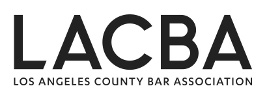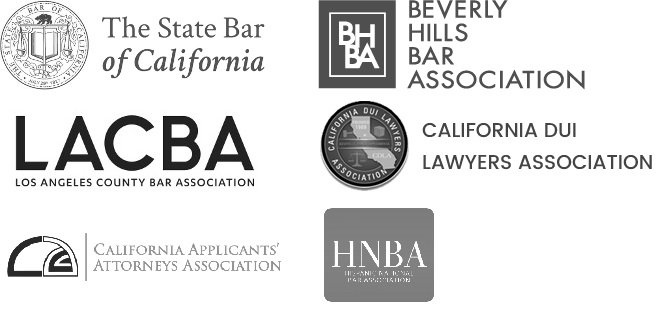Types of Work Injuries
Which Workplace Injuries Are Covered By Workers’ Compensation in California?
Injured at work? Claim denied or delayed?
Millions of workers get hurt on the job every year in California. When these injuries happen, workers’ compensation helps cover medical bills and lost wages. Workers’ compensation covers many different types of injuries, from sudden accidents like falls and cuts to long-term problems from repetitive motions or harmful workplace conditions.
Some workplace injuries are easy to spot, like broken bones from falls or burns from hot equipment. Others develop slowly over time, such as back pain from lifting heavy boxes or carpal tunnel from typing. The team at LG Law Center sees all kinds of work injuries in Ontario and throughout California.
Understanding what types of injuries qualify for workers’ compensation can help employees know their rights. Whether someone gets hurt in a single accident or develops health problems from workplace conditions, they may be entitled to benefits. This guide will explain the most common work injuries and how California’s workers’ compensation system protects injured workers.
If you were injured at work and either want to file for Workers’ Comp or are having difficulty getting approved, LG Law Center is here to help. Contact us today for a free case review.
Understanding Workers’ Compensation in California
California requires most employers to carry workers’ compensation insurance that covers medical expenses and lost wages for job-related injuries. The system provides a legal framework to ensure employees get the necessary benefits when they suffer workplace injuries or illnesses.
What Is Workers’ Compensation?
Workers’ compensation is a state-mandated insurance system that protects employees who get hurt or sick because of their job. In California, this system covers medical treatment and provides financial support while workers recover.
The California workers’ compensation system defines an injury as “any injury or disease arising out of and in the course of employment.” This broad definition includes many types of workplace incidents.
Two main categories of injuries exist:
- Specific injuries – occur from one event or incident
- Cumulative injuries – develop over time from repeated work activities
The system covers various workplace incidents. These include vehicle accidents, chemical exposure, slips and falls, cuts, and punctures. It also covers occupational diseases that develop from work conditions.
Who Is Eligible for Workers’ Compensation?
Most employees in California qualify for workers’ compensation benefits. Workers must have suffered an injury or illness directly related to their job duties or workplace.
Eligible workers include:
- Full-time employees
- Part-time employees
- Seasonal workers
- Some independent contractors
The injury must happen “in the course of employment.” This means the worker was performing job duties or was in a work-related situation when the injury occurred.
Some injuries may not be covered:
- Self-inflicted injuries done on purpose
- Injuries from fighting or horseplay
- Injuries while under the influence of drugs or alcohol
- Injuries from personal activities unrelated to work
Workers do not need to prove their employer was at fault. The system provides benefits regardless of who caused the accident.
How Workers’ Compensation Claims Work
Workers must report their injury to their employer as soon as possible. California law requires reporting within 30 days of the incident or when the worker first knew the injury was work-related.
The employer must provide a claim form called DWC-1 within one working day. Workers should fill out their section and return it to start the claims process.
The claims process includes these steps:
- Report the injury to the employer
- Complete the claim form
- See an approved doctor for treatment
- Wait for the insurance company’s decision
- Receive benefits if the claim is approved
Workers have the right to choose their own doctor if they pre-designated one before the injury. Otherwise, they must see doctors from the employer’s medical provider network for the first 30 days.
Benefits can include medical treatment, temporary disability payments, and permanent disability compensation. All medical care related to the work injury is covered with no out-of-pocket costs to the worker.
Common Types of Work Injuries in California
California workers face various types of injuries on the job, from sudden accidents to conditions that develop over time. These injuries range from cuts and sprains to serious illnesses caused by workplace conditions.
Physical Injuries
Physical injuries are the most common type of workplace accidents in California. These injuries happen suddenly and often require immediate medical attention.
Back and spine injuries affect thousands of California workers each year. Heavy lifting, poor posture, and sudden movements cause most of these problems. Workers in construction, healthcare, and warehouses face the highest risk.
Cuts and lacerations occur frequently in manufacturing and food service jobs. Sharp tools, machinery, and broken glass are common causes. These injuries can range from minor cuts to severe wounds requiring surgery.
Burns happen in many different workplaces. Kitchen workers face hot oil and steam burns. Construction workers deal with chemical burns and electrical injuries. Manufacturing employees may encounter hot metal or machinery burns.
Fractures and broken bones often result from falls, being struck by objects, or machinery accidents. Construction sites and warehouses see many of these injuries. Arms, legs, and ribs are the most commonly broken bones at work.
Eye injuries can cause permanent vision problems. Flying debris, chemicals, and bright lights are major causes. Welders, construction workers, and laboratory employees face higher risks.
Repetitive Stress Injuries
Repetitive stress injuries develop slowly over time from doing the same motions repeatedly. These conditions affect muscles, tendons, and nerves throughout the body.
Carpal tunnel syndrome is very common among California workers. Typing, assembly line work, and using vibrating tools can cause this condition. The hands and wrists become numb and painful.
Rotator cuff injuries affect the shoulder area. About 36,000 shoulder injuries appeared in California workers’ compensation cases in 2021. Reaching overhead repeatedly or lifting heavy objects causes most of these problems.
Tendonitis can develop in any joint used repeatedly at work. Elbows, knees, and ankles are common areas. The tendons become swollen and painful over time.
Back strain from repetitive bending and lifting creates ongoing pain. Warehouse workers, nurses, and delivery drivers often develop these problems. Poor lifting techniques make the injuries worse.
Occupational Illnesses
Occupational illnesses develop from exposure to harmful substances or conditions at work. These health problems may take months or years to appear.
Lung diseases come from breathing dangerous materials. Asbestos, silica dust, and chemical fumes can cause serious breathing problems. Construction workers and factory employees face higher risks.
Skin conditions result from contact with chemicals, oils, or other irritating substances. Rashes, burns, and allergic reactions are common. Healthcare workers and cleaning staff often develop these problems.
Hearing loss happens gradually from loud noise exposure. Construction sites, factories, and airports create dangerous noise levels. Many workers don’t realize the damage until it’s too late.
Chemical poisoning can affect many body systems. Pesticides, cleaning products, and industrial chemicals cause these illnesses. Symptoms may include headaches, nausea, and breathing problems.
Catastrophic Injuries
Catastrophic injuries cause permanent disabilities that change a worker’s life forever. These serious injuries require long-term medical care and often prevent returning to work.
Spinal cord injuries can cause partial or complete paralysis. Falls from heights and heavy machinery accidents are common causes. These injuries require immediate emergency treatment.
Traumatic brain injuries happen from severe head impacts. Construction accidents and falls cause many of these injuries. Memory problems, personality changes, and physical disabilities may result.
Amputations involve losing fingers, hands, arms, or legs. Machinery accidents and crushing injuries cause most amputations. Workers may need prosthetic devices and extensive rehabilitation.
Severe burns covering large body areas require multiple surgeries and long recovery times. Chemical explosions and electrical accidents cause the most serious burns. Scarring and limited movement often result.
Injuries From Workplace Accidents
Workplace accidents happen suddenly and can cause serious injuries that qualify for workers’ compensation benefits. These accidents often involve slips and falls, dangerous machinery, or vehicles used during work hours.
Slip and Fall Accidents
Slip and fall accidents are among the most common workplace injuries. They happen when workers lose their footing on wet floors, uneven surfaces, or cluttered walkways.
Common causes include:
- Wet or slippery floors
- Poor lighting in work areas
- Loose carpets or mats
- Cluttered stairs and walkways
- Weather conditions like ice or snow
These accidents can cause different types of injuries. Workers may suffer broken bones, sprains, or head injuries. Back injuries are also common when someone falls hard.
Typical injuries from falls:
- Broken wrists or arms
- Ankle sprains
- Head trauma or concussions
- Spinal injuries
- Hip fractures
Workers’ compensation usually covers these injuries when they happen at work. The benefits include medical treatment and lost wages while recovering.
Machinery-Related Injuries
Heavy machinery and equipment cause serious workplace injuries every year. These accidents happen when workers get caught in moving parts or struck by equipment.
Factory workers face the highest risk of machinery injuries. Construction workers also deal with dangerous equipment daily. Office workers may get hurt by smaller machines like printers or paper shredders.
Common machinery accidents include:
- Getting fingers caught in moving parts
- Being struck by falling equipment
- Burns from hot machinery
- Cuts from sharp tools or blades
These injuries are often severe and may require surgery. Workers might lose fingers or limbs in the worst cases. Even smaller accidents can cause permanent damage.
Employers must provide safety training and protective equipment. When they fail to do this, workers still qualify for compensation benefits.
Vehicle-Related Injuries
Workers who drive for their job face risks from car accidents and other vehicle incidents. This includes delivery drivers, sales people, and construction workers who operate heavy vehicles.
Vehicle accidents at work happen from:
- Crashes with other cars
- Backing into objects or people
- Rollovers with heavy trucks
- Equipment falling from vehicles
Injuries from these accidents can be life-changing. Workers may suffer broken bones, brain injuries, or spinal damage. Some accidents result in permanent disabilities.
Workers’ compensation covers vehicle accidents that happen during work hours. This includes driving to job sites or making deliveries. The coverage includes medical bills and rehabilitation costs.
Even workers who use their own cars for work duties qualify for benefits when accidents occur.
Injuries Due to Workplace Conditions
Some work injuries happen because of bad conditions at the workplace. Workers can get sick from breathing harmful chemicals, lose their hearing from loud noise, or develop mental health problems from stress at work.
Exposure to Harmful Substances
Workers who breathe in dangerous chemicals, dust, or fumes can develop serious health problems. These are called occupational illnesses.
Common harmful substances include:
- Asbestos in old buildings
- Chemical fumes from cleaning products
- Lead paint particles
- Industrial dust and particles
Workers in factories, construction sites, and hospitals face higher risks. Some illnesses take years to show up after the first exposure.
Types of illnesses from harmful substances:
- Lung problems like asbestosis
- Skin rashes and burns
- Breathing disorders
- Cancer from long-term exposure
Workers must prove their illness came from their job to get benefits. Medical records and workplace testing help show this connection.
Hearing Loss or Vision Problems
Loud workplaces can damage a worker’s hearing over time. Construction sites, factories, and airports are common places where this happens.
Hearing loss symptoms include:
- Ringing in the ears
- Trouble hearing conversations
- Need to turn up TV or radio volume
Vision problems can happen from welding, computer work, or chemical exposure. Welders often get “arc eye” from bright lights. Office workers may develop eye strain from staring at screens all day.
Vision problems covered include:
- Eye injuries from flying objects
- Chemical burns to the eyes
- Loss of sight from bright lights
- Eye strain from computer work
These conditions often develop slowly. Workers may not notice the problem until it gets worse.
Mental Health Injuries
Work stress can cause real mental health problems that workers’ compensation may cover. High-stress jobs or traumatic events at work can lead to these conditions.
Common mental health injuries include:
- Depression from workplace bullying
- Anxiety from dangerous work conditions
- PTSD from witnessing accidents
- Panic attacks from work stress
Mental health claims are harder to prove than physical injuries. Workers need strong medical evidence to show their condition came from work.
Examples of covered situations:
- Bank workers who experience robberies
- First responders who see traumatic events
- Workers who face constant harassment
- Employees in high-pressure jobs
Each state has different rules about mental health claims. Some states only cover mental injuries if they come with physical injuries too.
Less Common Work Injuries
While most workplace accidents involve common injuries like sprains or cuts, some workers face more severe and life-altering injuries. Burns, electrical injuries, crush injuries, and amputations happen less often but cause serious harm that requires extensive medical care and long recovery times.
Burns and Electrical Injuries
Burns and electrical injuries affect workers in many different job settings. These injuries happen most often in construction, manufacturing, and electrical work.
Types of burn injuries include:
- Chemical burns from dangerous substances
- Heat burns from hot surfaces or fires
- Electrical burns from contact with live wires
- Steam burns from hot water or machinery
Electrical injuries can cause both visible burns and hidden damage inside the body. The electrical current can harm muscles, nerves, and organs that workers cannot see right away.
These injuries often need special medical treatment at burn centers. Workers may need multiple surgeries and skin grafts. Recovery can take months or years.
Many burn and electrical injury cases qualify for workers’ compensation benefits. The injured worker usually receives coverage for medical bills, lost wages, and disability payments.
Crush and Amputation Injuries
Crush and amputation injuries happen when heavy machinery, falling objects, or equipment traps or cuts off body parts. These injuries occur most often in factories, construction sites, and warehouses.
Common causes include:
- Getting caught in machinery
- Being struck by falling objects
- Equipment malfunctions
- Vehicle accidents at work
Crush injuries can damage bones, muscles, and blood vessels without removing the body part. Amputation injuries involve the complete or partial loss of fingers, hands, arms, feet, or legs.
These injuries often end a worker’s ability to do their old job. Many workers need prosthetic devices and learn new job skills.
Workers’ compensation typically covers the high medical costs for these injuries. This includes emergency surgery, hospital stays, prosthetics, and rehabilitation therapy.
Injured At Work? Contact LG Law Center Today!
Getting hurt at work can be scary and confusing. Workers often don’t know what steps to take next.
LG Law Center is here to help workers in Ontario, California get the benefits they deserve. The team understands workers’ compensation law and fights for injured employees.
Why Contact LG Law Center?
- Experience – Luis E. Gonzalez focuses on workers’ compensation cases
- Local Knowledge – Based in Ontario, California
- Free Consultation – Initial meeting costs nothing
Time matters when filing a workers’ compensation claim. California has strict deadlines that workers must follow.
The insurance company may try to deny claims or offer less money than workers need. Having legal help levels the playing field.
What to Expect
LG Law Center will review the case details. They look at medical records and accident reports. The team also talks to doctors about injuries.
Workers deserve:
- Medical care for their injuries
- Lost wage payments
- Help with permanent disabilities
- Job retraining if needed
Don’t let the insurance company take advantage. Workers’ compensation exists to protect employees who get hurt on the job.
Contact LG Law Center today to discuss your case for free. The sooner workers get help, the better their chances of getting full benefits.


Workers’ Compensation Attorney in Ontario, California
If you’ve been injured on the job in Ontario, California, you may be entitled to workers’ compensation benefits to help cover your medical care and lost wages. While the system is designed to protect workers, filing a successful claim can quickly become complicated, especially when insurance companies work hard to minimize payouts. From delayed treatments to denied benefits, many injured workers find themselves struggling to get the support they need.
LG Law Center is committed to protecting the rights of injured employees throughout Ontario and Pomona. Their experienced workers’ compensation attorneys know how to stand up to insurance companies and fight for the full benefits you deserve. Contact them today for a free consultation and let them help you take the next step toward recovery.







